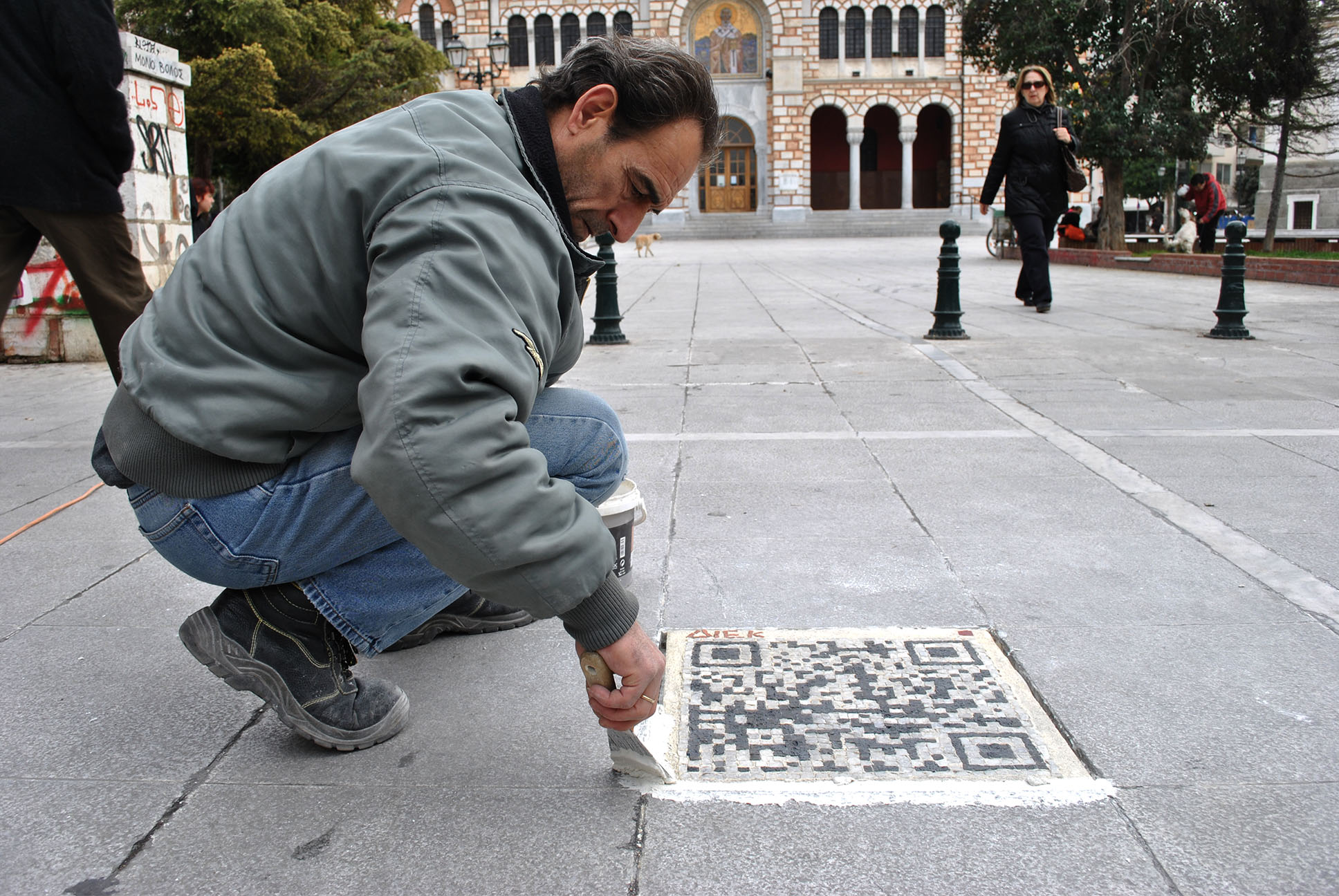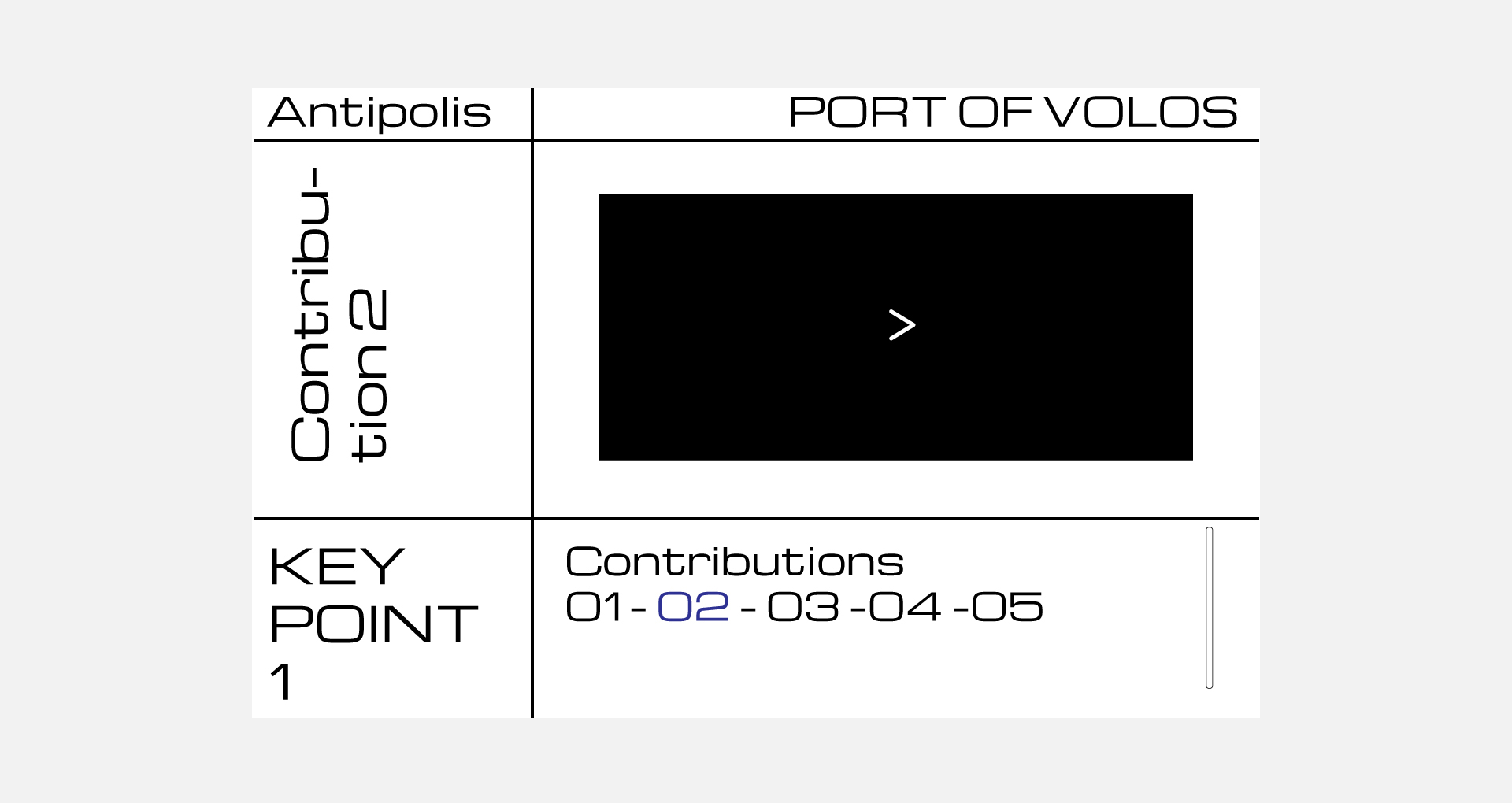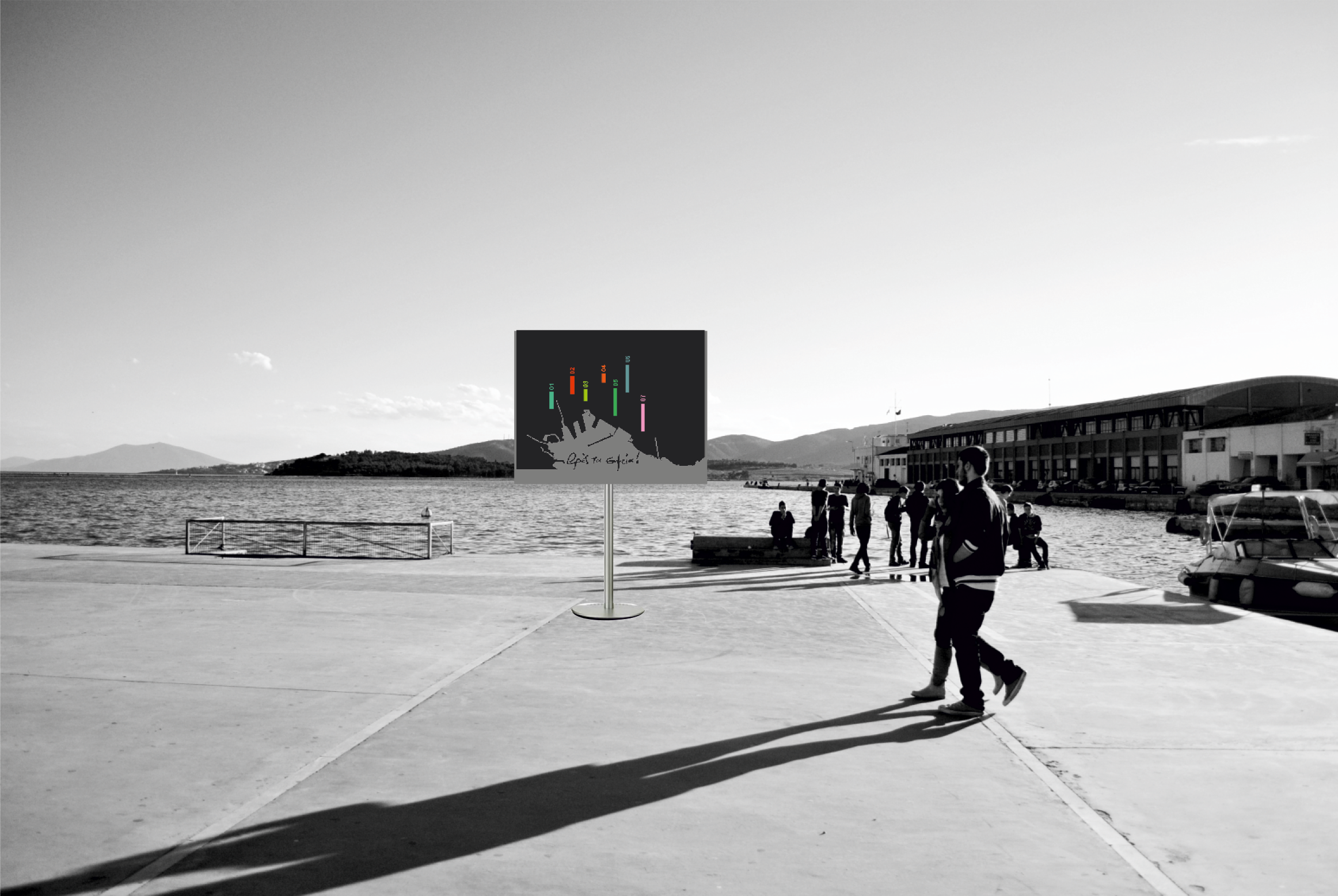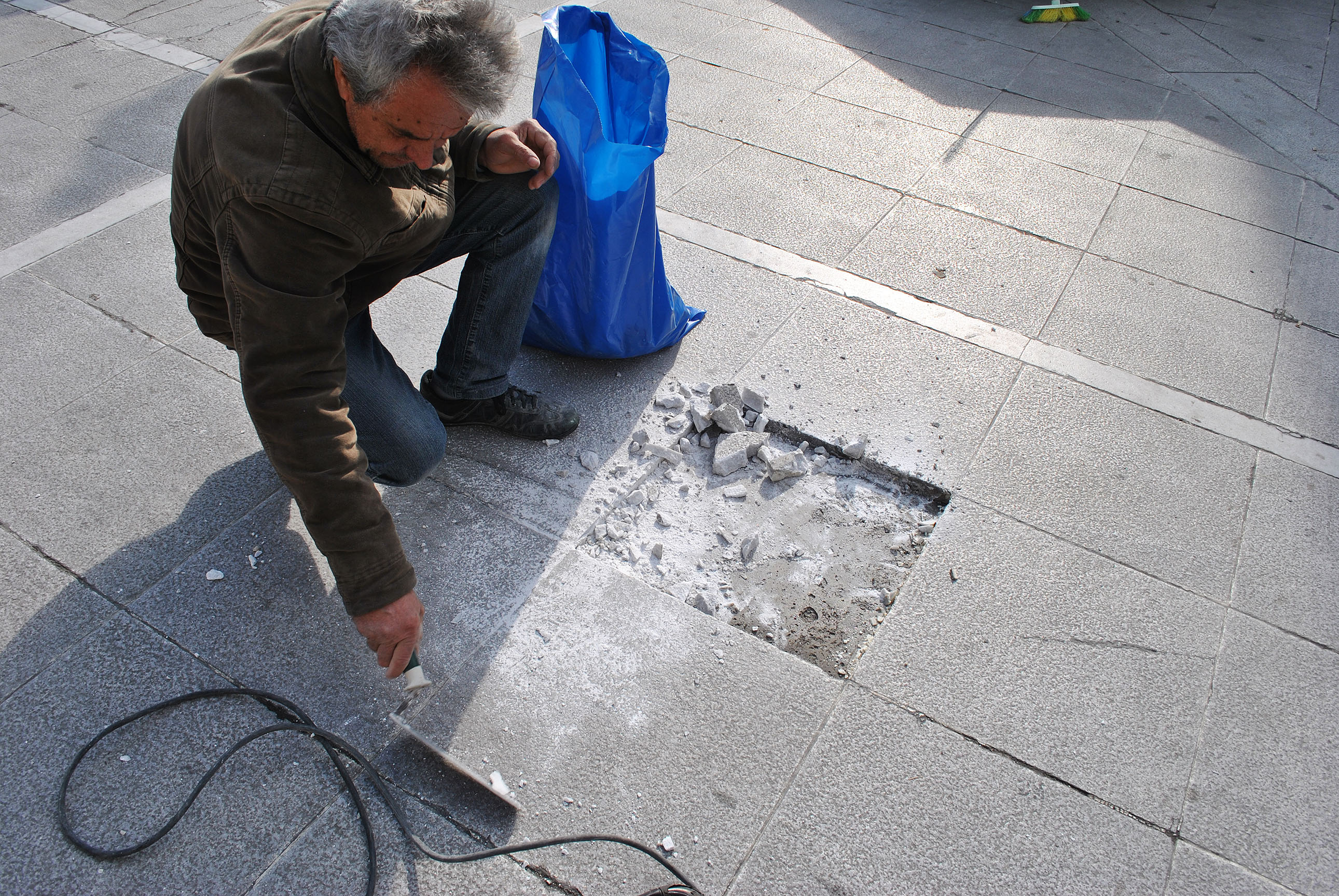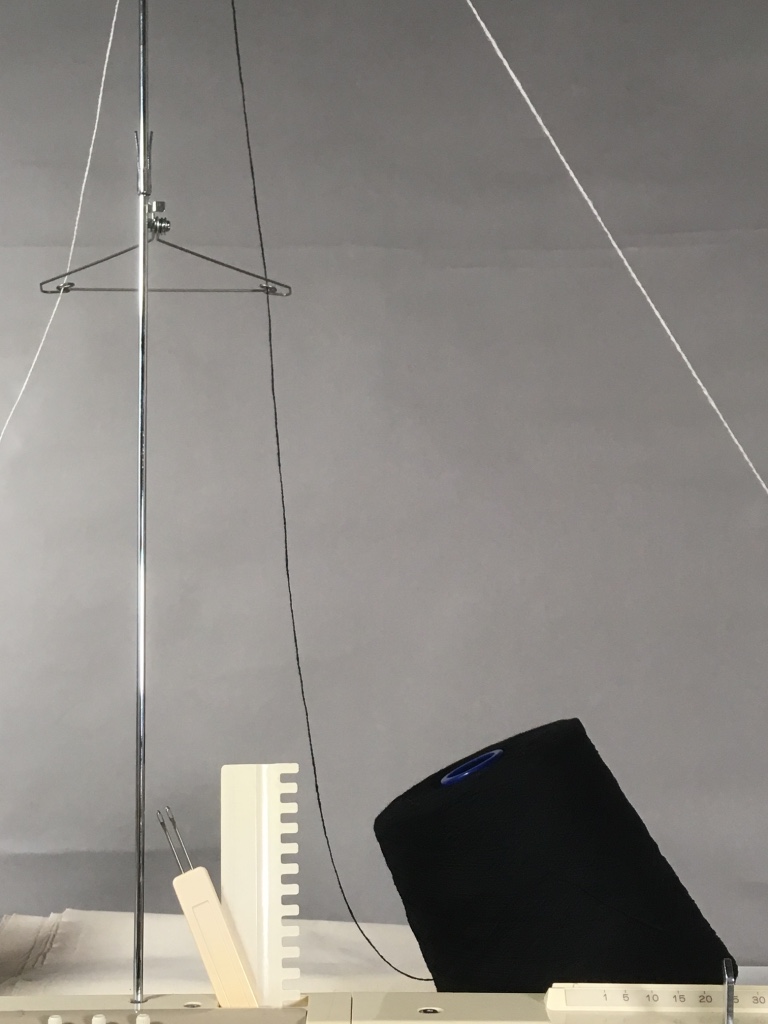Antipolis is an interactive landscape installation that enables the towns citizens and visitors to have access to historical and cultural information as well as to participate more actively and directly in the public affairs of the city they live in with their online contributions.
</unravel;> was made collaboration with Ellen Jonsson
Degree Show project. Knitted artwork + performance
68 cm x 25 m, Lambswool, laptops, screen, arduino
︎home
︎read more
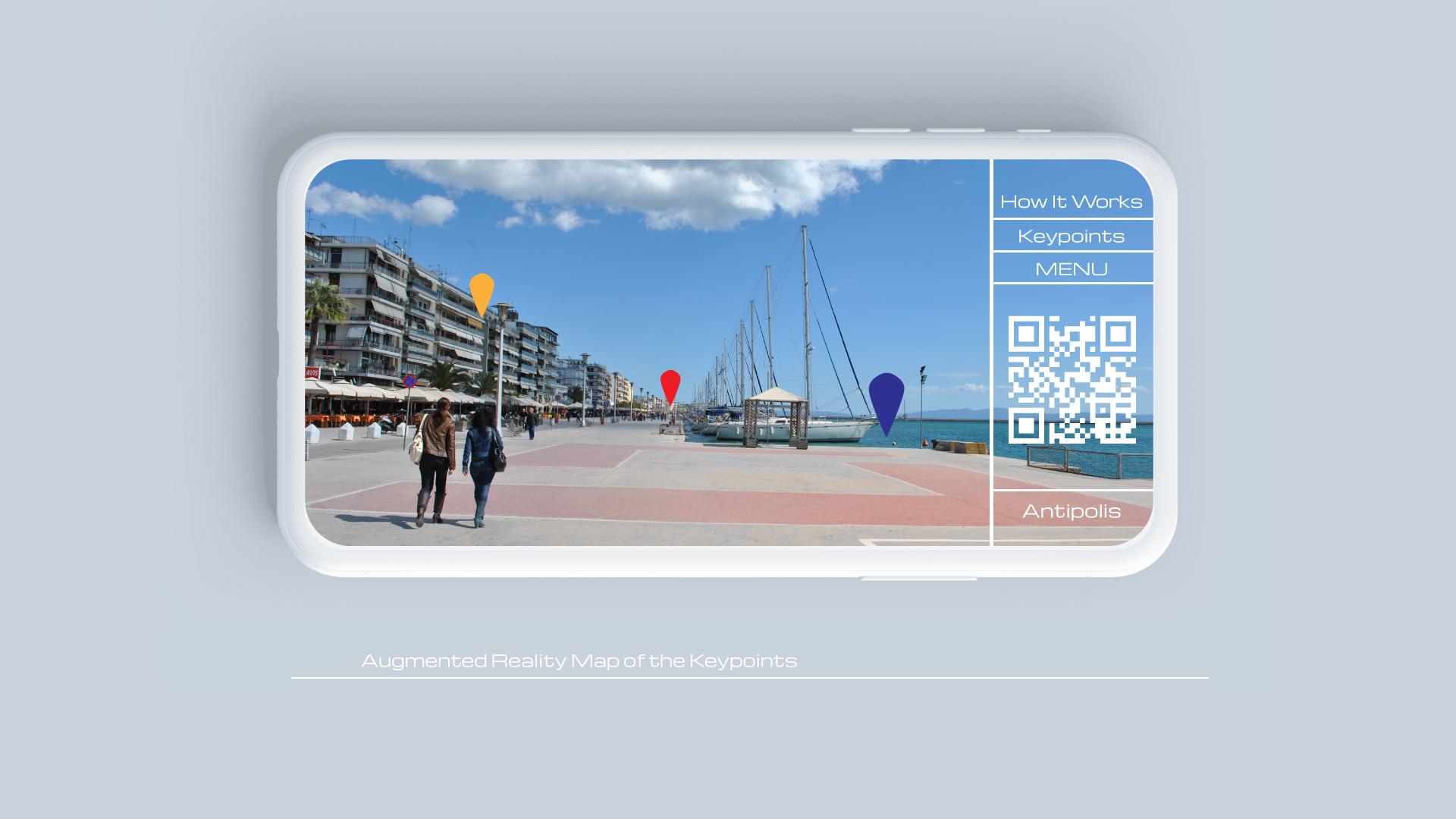
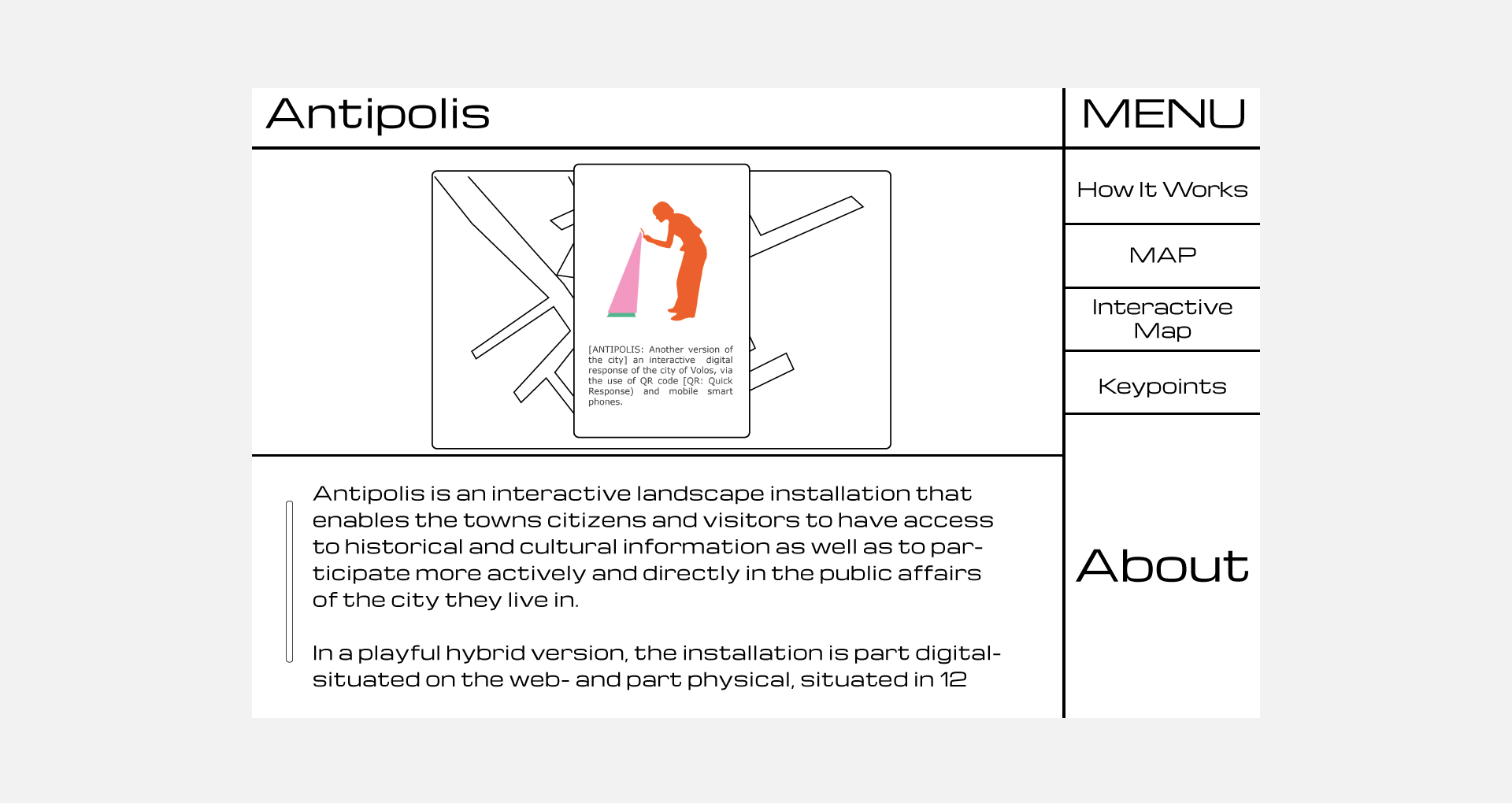
Volos is the 4th most important port in Greece.
The town has many historical, archeological and natural resources
that often go unnoticed because of a poor information network.
The problem: no maps, no information, no accessibility.
The concept
Perfectly summed up in the word textus, text and textiles are deeply linked and interconnected with coding. Language and knitting are coded systems themselves: a set of rules and functions.
In this process of interlacing yarns and ideas, the medium becomes the message.
We found there was no better way to talk about binarisms than by using the binary system par excellence: weaving and the Jacquard loom is the first form of programming.
The 25 meter long knitted essay produced during the Degree Show is rather a collection of extracts and quotes by authors that inspire us in our practices: Margaret Atwood, Sadie Plant, Marshall McLuhan, Monique Wittig, Donna Haraway, Anni Al- bers, Michel Foucault, Gilles Deleuze; just to name a few.
The performative installation.
We didn’t want to just show a finished knitted piece. The content was knitted and revealed (unraveled) day by day, during the week of the Degree Show, and included a title, 4 Chapters and a bibliography.
We believe that design can be performative. Pushing the boundaries of what graphic design is- and can be- brings a higher en- gagement with the audience. The positive feedback we had during the Show and the exciting response of people to the work only but confirmed that.
The cubical installation was designed to reflect upon the hybrid usage of technologies, and in this, the knitting machine functions as a printer, although ‘printing’ on textile. An arduino-based motor would help the knitted piece roll out of a slot into a canvas scoop, facilitating the audience to read the knitted text and pick it up to explore the content of the previous days.
The cubical installation was designed to reflect upon the hybrid usage of technologies, and in this, the knitting machine functions as a printer, although ‘printing’ on textile. An arduino-based motor would help the knitted piece roll out of a slot into a canvas scoop, facilitating the audience to read the knitted text and pick it up to explore the content of the previous days.
Images of the text that was being knitted each day would appear on a screen and were simultaneously uploaded on an online platform specifically created for the project. It was important for us that people read the texts and reflected, as we did, upon the issues we were trying to tackle. For that reason, knitting a bibliography was essential to track down the sources of the text and give people the opportunity to read more if they wish to.
